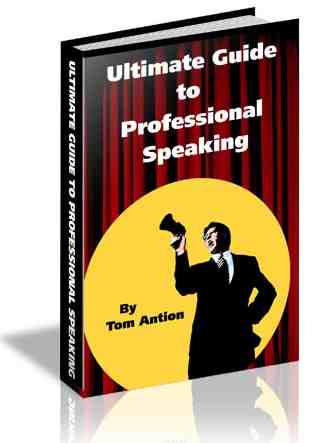You are probably wondering how you decide where to put the humor you have so carefully selected to use in your presentation. You weren't wondering? Well, I'm going to tell you anyway.
First of all, starting with a funny story or joke is expected and trite. You may want to postpone your story until the audience is resolved that you will be bestowing a rare case of sleeping sickness on them and then you surprise them with the humor. Don't be afraid to do the unexpected. Humor is one of the attention getting devices that can take your audience to the peaks of intensity.
To get started in figuring the placement of your humor, first find out or decide how much time you are expected to talk. Divide this time into equal segments. If the percentage of humor is to be low, you might make a humorous comment each six to eight minutes. If the percentage of humor is very high, you might be making a humorous comment every minute. Going through this process tells you roughly how much humor or other attention gaining devices you need to accomplish your goals.
I'm assuming at this point that all the humor you have selected is relevant to your audience and your topic. If it is not, throw it out now and search for something to replace it that is relevant to your program.
Next, you should be ready to place the humor in your program. Don't make the mistake of forcing humor and other material to fit. It makes no difference if one segment goes several minutes longer than another or if you don't hit the funny bone exactly every six to eight minutes. Just use that time length as a guideline. All you have to do now is decide if you want humor in your opening and/or closing.
Finally, the third aspect of timing has to do with 'planned spontaneity.' This term seems like an oxymoron, or contradiction in terms, doesn't it? (see
article on this website) When it comes to professional presentations, preparation will be a big factor in your ultimate success.
Prepared remarks that appear spontaneous deserve a mention when talking about timing. During the course of a presentation, windows of opportunity for witty remarks open and close. They are usually related to 'expected/unexpected' happenings during the presentation, or questions from the audience. Let's say you are writing on the flipchart and your marker runs out of ink. Your window of opportunity is now open. You might jump through the window and say, 'I guess I've come to the dry part of my presentation' Window slams shut. Everything is fine. You look like a quick wit and a pretty cool NO ZZZZZs presenter.
What if you waited until you searched out a new marker to say the same line? The window had already slammed shut 30 seconds ago and now you are trying to jump through. You lose. The spontaneity is gone and so is the impact (except for smashing your head into the glass). What do you have to do to be sure you will be ready when a window opens?
Many problems can be anticipated. If you are using a slide projector, the bulb might blow. You may be interrupted by a loud noise. Your microphone might squeal, etc. Prepare comments in advance so you can recall them immediately when needed. If you let too much time pass between the incident and your comment, you're better off foregoing the comment. It's too late to make it funny.
(see Funny Question and Answer Sessions article on this website) from the audience can be treated the same way. If you've been presenting your material long enough, you can probably anticipate most of the questions that come up. Prepare a witty answer to each question and use it when the question arises. Then go on and give your serious answer. Be careful when using this technique your witty answer doesn't make the person asking the question feel stupid.






